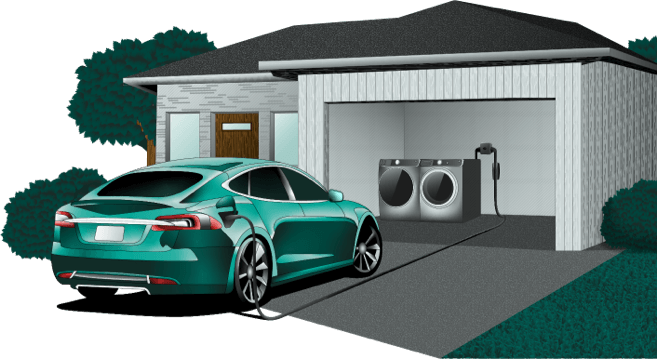EV Charger Installation Guide
What do I Need to Know to Install an EV Charger?
Installing an EV charger can seem like a daunting task, but with the right knowledge and preparation, it can be a relatively straightforward process.
Here are a few things you should know before installing an EV charger:
- Understand the different types of EV chargers: There are three main types of EV chargers: Level 1, Level 2, and Level 3. Level 1 chargers are the most basic and typically use a standard 120-volt household outlet. Level 2 chargers are more powerful and use a 240-volt outlet. Level 3 chargers, also known as DC fast chargers, are the most powerful and use a 480-volt outlet. Make sure you know which type of charger you need before you start the installation process.
- Check your electrical panel’s capacity: Before installing an EV charger, you’ll need to make sure your electrical panel has the capacity to handle the additional load. This means checking the ampacity of your panel and making sure you have enough circuits available. A Level 2 charger will typically require a dedicated 240-volt circuit, and a Level 3 charger will require a dedicated 480-volt circuit.
- Hire a licensed electrician: Installing an EV charger requires knowledge and skills that go beyond the average DIY project. It’s essential to hire a licensed electrician with experience in EV charger installation to ensure the job is done correctly and safely.
- Check for permits and inspections: Depending on your area, you may need to obtain permits and schedule inspections before and after the installation of an EV charger. Make sure you check with your local government to find out what is required in your area.
- Consider the location of your charger: Think about where you will be using your EV charger the most. If you’re planning on charging your EV at home, you’ll want to make sure the charger is located in a convenient spot, such as a garage or driveway. If you’re planning on installing a public charger, make sure it’s located in a high-traffic area and is easily accessible to EV drivers.
- Know the warranty and maintenance: Make sure you understand the warranty and maintenance requirements of your EV charger before you install it. Many manufacturers offer warranties on their chargers, and regular maintenance will help ensure they continue to function properly over time.
In summary
Installing an EV charger requires knowledge and preparation. Understanding the different types of chargers, checking your electrical panel’s capacity, hiring a licensed electrician, checking for permits and inspections, considering the location of your charger, and knowing the warranty and maintenance requirements are the main things you need to know before installing an EV charger. Ensure the safe and correct installation of your EV charger with the right knowledge and thorough preparation.

